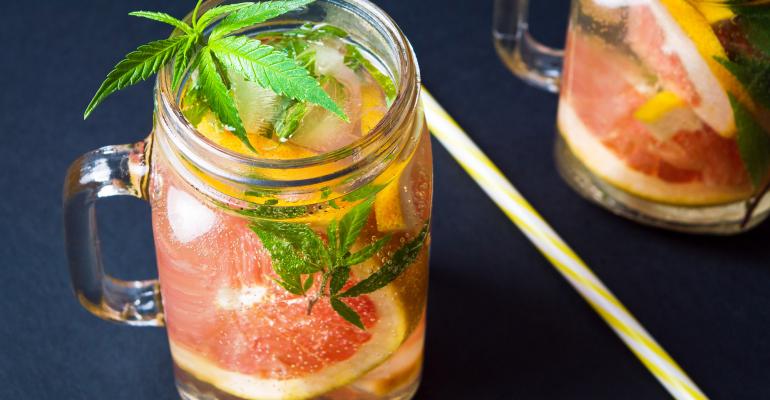Menus stressing veggies over meat, dragon fruit in your cocktail, and spikes of CBD oil everywhere. Big hospitality management company Benchmark includes these forecasts in its “Top Dining Trends for 2020,” released yesterday. The trends were observed by Benchmark’s executive chefs and culinary experts at the company’s 80 luxury hotels, resorts and restaurants.
1. CBD-infused food and beverages will grow.
Cannabidiol—or CBD—is a naturally occurring, non-psychoactive compound found in the resinous flower of cannabis. Fans say that CBD oil can reduce pain, stress and anxiety. CBD-infused drinks are gaining momentum in the form of sparkling waters, coffees, teas, energy drinks, beer, wine and mixed alcohol beverages. The same goes for foods spiked with CDB oil.
2. Plant-based menus will bloom.
Many people are making a conscious decision to make a dietary switch into the "plant-based ecosystem," Benchmark says, and plant-based food alternatives are being developed to replace meat and dairy. Savvy chefs are cooking up meat and dairy flavors from non-meat and non-dairy products such as soy, peas, cashews, and almonds.
3. Snacking will get smarter.
The wonderful crunch of chips is coming from healthier ingredients, including chickpeas, beets, quinoa and kale. “They may not be the most appealing aesthetically but are going to satisfy snack cravings effectively,” Benchmark says. “Expect this crunchy trend to build in 2020.”
4. Jackfruit will be a meat alternative.
The newest go-to meat substitute is jackfruit, a southeast Asian fruit that is a great source of iron, calcium and B vitamins. The texture of jackfruit mimics pulled pork.
5. Exotic fruits will flavor drinks.
Among the usual sweet flavors found on beverage menus, unique fruit flavors--such as cactus--are taking mixology ideation by storm, Benchmark says. “More specifically, spiny cactus fruits such as prickly pear and dragon fruit are piquing consumer interest,” they say. “Consumers are also exploring more unique fruit flavor varieties, including bergamot orange, yuzu, calamansi, citron, makrut lime, pomelo, Meyer lemon, blood orange and ugli fruit--a Jamaican form of the tangelo--to name a few.”
6. Got oat milk?
Oat milk has emerged as “the golden child of all the alternative milks,” Benchmark says. “It’s terrific in coffees, and baristas can barely keep it in stock. So, it makes sense that companies are piggybacking off its success and launching other oat milk products as alternatives to dairy, to help minimize the environmental impacts associated with animal husbandry.”
7. Sparkling waters will flow.
Consumers who are concerned about sugar but still want to satisfy their craving for carbonation are turning to sparkling water. Benchmark recommends offering unique flavors and both low- and no-alcohol options.
8. Food will go ‘bright and bold.’
“Color generates emotional appeal with food--it may be as important as taste,” Benchmark says. “Skilled food and beverage operators have an eye for what beverages succeed on social media, where color is critically important, looking for products that are ‘Instagram-friendly.’” Colorful ingredient options include blue algae, beets, matcha, and butterfly pea flower tea, which changes color from blue to purple when acidity is added to it.
9. Sustainability will take center stage.
“As news about climate change, disappearing rainforests and plastic in the oceans dominates the news cycle and our social feeds, consumers are demanding sustainability in all forms of packaging--quickly making this integral to today’s food and beverage operating model,” Benchmark says. “Whether it’s swapping out Styrofoam and plastic for paper or bamboo, or buying ingredients from sustainable sources, sustainability will sweep the entire industry in 2020. The heightened focus on single-use plastics is not just a fad but a reality that goes beyond the purge of the plastic straw.”





